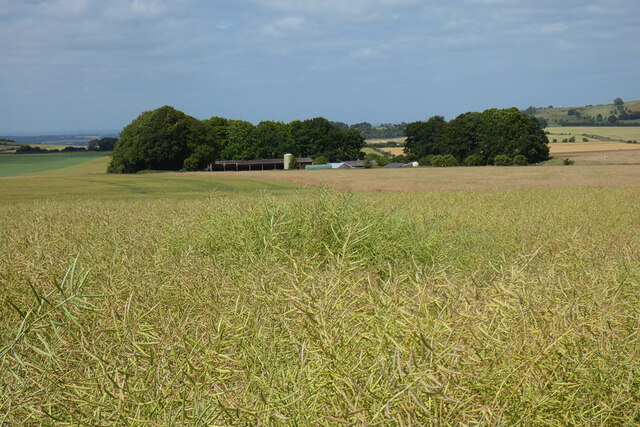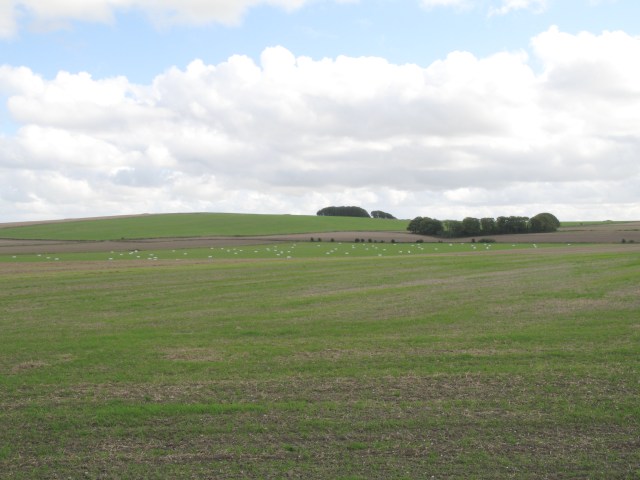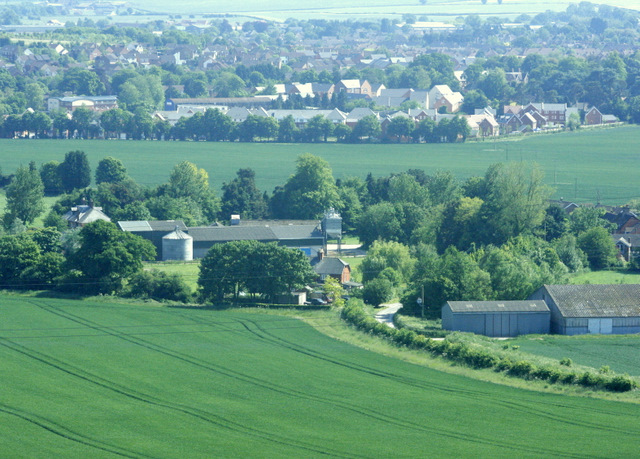Middle Plantation
Wood, Forest in Wiltshire
England
Middle Plantation
![A walk around Beacon Hill [2] A marker post at Oliver&#039;s Castle. The hillfort is a scheduled ancient monument see <span class="nowrap"><a title="https://historicengland.org.uk/listing/the-list/list-entry/1005709" rel="nofollow ugc noopener" href="https://historicengland.org.uk/listing/the-list/list-entry/1005709">Link</a><img style="margin-left:2px;" alt="External link" title="External link - shift click to open in new window" src="https://s1.geograph.org.uk/img/external.png" width="10" height="10"/></span> and the down is on the register of historic battlefields see <span class="nowrap"><a title="https://historicengland.org.uk/listing/the-list/list-entry/1000030" rel="nofollow ugc noopener" href="https://historicengland.org.uk/listing/the-list/list-entry/1000030">Link</a><img style="margin-left:2px;" alt="External link" title="External link - shift click to open in new window" src="https://s1.geograph.org.uk/img/external.png" width="10" height="10"/></span>
This short walk takes in Oliver’s Castle, an Iron Age hill fort, the former road to Bath, and the lower slopes of Beacon Hill which became known as Bloody Ditch when, after the battle of Roundway Down, the Parliamentary cavalry, in full retreat, rode over the edge to their death.](https://s1.geograph.org.uk/geophotos/07/04/90/7049061_bfd42f0d.jpg)
Middle Plantation is a small village located in the county of Wiltshire, England. Situated amidst the picturesque landscape of woodlands and forests, it is known for its serene and tranquil atmosphere. The village is nestled between the towns of Trowbridge and Westbury, offering easy access to urban amenities while still retaining its rural charm.
Middle Plantation is surrounded by dense woodlands, making it an ideal location for those seeking a peaceful retreat. The forested areas provide ample opportunities for outdoor activities such as hiking, cycling, and birdwatching. The village is also home to several nature reserves, allowing visitors to explore and appreciate the diverse flora and fauna of the region.
The architecture of Middle Plantation reflects its rich history, with many buildings dating back several centuries. The village is characterized by traditional stone houses and thatched cottages, adding to its picturesque appeal. The local church, St. Mary's, is a notable landmark, boasting stunning medieval architecture and well-preserved stained glass windows.
Despite its small size, Middle Plantation offers a range of amenities to its residents and visitors. The village has a local pub, The Woodman's Arms, known for its warm hospitality and traditional British cuisine. There are also a few small shops and businesses catering to the daily needs of the community.
Overall, Middle Plantation is a charming village that combines natural beauty with a rich historical heritage. Whether one is looking for a peaceful getaway or a place to settle down, this idyllic location in Wiltshire offers a delightful and welcoming environment.
If you have any feedback on the listing, please let us know in the comments section below.
Middle Plantation Images
Images are sourced within 2km of 51.374615/-1.999879 or Grid Reference SU0063. Thanks to Geograph Open Source API. All images are credited.
![A walk around Beacon Hill [2] A marker post at Oliver&#039;s Castle. The hillfort is a scheduled ancient monument see <span class="nowrap"><a title="https://historicengland.org.uk/listing/the-list/list-entry/1005709" rel="nofollow ugc noopener" href="https://historicengland.org.uk/listing/the-list/list-entry/1005709">Link</a><img style="margin-left:2px;" alt="External link" title="External link - shift click to open in new window" src="https://s1.geograph.org.uk/img/external.png" width="10" height="10"/></span> and the down is on the register of historic battlefields see <span class="nowrap"><a title="https://historicengland.org.uk/listing/the-list/list-entry/1000030" rel="nofollow ugc noopener" href="https://historicengland.org.uk/listing/the-list/list-entry/1000030">Link</a><img style="margin-left:2px;" alt="External link" title="External link - shift click to open in new window" src="https://s1.geograph.org.uk/img/external.png" width="10" height="10"/></span>
This short walk takes in Oliver’s Castle, an Iron Age hill fort, the former road to Bath, and the lower slopes of Beacon Hill which became known as Bloody Ditch when, after the battle of Roundway Down, the Parliamentary cavalry, in full retreat, rode over the edge to their death.](https://s1.geograph.org.uk/geophotos/07/04/90/7049061_bfd42f0d.jpg)
![A walk around Beacon Hill [3] Bloody Ditch, the lower slopes of Beacon Hill, seen from the footpath.
This short walk takes in Oliver’s Castle, an Iron Age hill fort, the former road to Bath, and the lower slopes of Beacon Hill which became known as Bloody Ditch when, after the battle of Roundway Down, the Parliamentary cavalry, in full retreat, rode over the edge to their death.](https://s3.geograph.org.uk/geophotos/07/04/90/7049063_5a736938.jpg)
![A walk around Beacon Hill [4] The bridleway is a little overgrown.
This short walk takes in Oliver’s Castle, an Iron Age hill fort, the former road to Bath, and the lower slopes of Beacon Hill which became known as Bloody Ditch when, after the battle of Roundway Down, the Parliamentary cavalry, in full retreat, rode over the edge to their death.](https://s1.geograph.org.uk/geophotos/07/04/90/7049065_2a6faefc.jpg)
![A walk around Beacon Hill [5] The hillfort of Oliver&#039;s Castle, seen from the edge of Beacon Hill. The hillfort is a scheduled ancient monument see <span class="nowrap"><a title="https://historicengland.org.uk/listing/the-list/list-entry/1005709" rel="nofollow ugc noopener" href="https://historicengland.org.uk/listing/the-list/list-entry/1005709">Link</a><img style="margin-left:2px;" alt="External link" title="External link - shift click to open in new window" src="https://s1.geograph.org.uk/img/external.png" width="10" height="10"/></span> and the down is on the register of historic battlefields see <span class="nowrap"><a title="https://historicengland.org.uk/listing/the-list/list-entry/1000030" rel="nofollow ugc noopener" href="https://historicengland.org.uk/listing/the-list/list-entry/1000030">Link</a><img style="margin-left:2px;" alt="External link" title="External link - shift click to open in new window" src="https://s1.geograph.org.uk/img/external.png" width="10" height="10"/></span>
This short walk takes in Oliver’s Castle, an Iron Age hill fort, the former road to Bath, and the lower slopes of Beacon Hill which became known as Bloody Ditch when, after the battle of Roundway Down, the Parliamentary cavalry, in full retreat, rode over the edge to their death.](https://s2.geograph.org.uk/geophotos/07/04/90/7049066_6248f1c1.jpg)
![A walk around Beacon Hill [6] A concrete structure of unknown purpose in the corner of the field, seen from the bridleway.
This short walk takes in Oliver’s Castle, an Iron Age hill fort, the former road to Bath, and the lower slopes of Beacon Hill which became known as Bloody Ditch when, after the battle of Roundway Down, the Parliamentary cavalry, in full retreat, rode over the edge to their death.](https://s3.geograph.org.uk/geophotos/07/04/90/7049067_cf55015d.jpg)
![A walk around Beacon Hill [10] Looking back at the bridleway as it ascends Beacon Hill.
This short walk takes in Oliver’s Castle, an Iron Age hill fort, the former road to Bath, and the lower slopes of Beacon Hill which became known as Bloody Ditch when, after the battle of Roundway Down, the Parliamentary cavalry, in full retreat, rode over the edge to their death.](https://s2.geograph.org.uk/geophotos/07/04/90/7049074_c7464484.jpg)

![A walk around Bromham [4] Seen from near the village of Bromham is the Iron Age hillfort of Oliver&#039;s Castle on Roundway Down. Roundway Down was the site of a major battle in 1643 during the civil war. The down is a prominent feature and is visible over a large area. The hillfort is a scheduled ancient monument see <span class="nowrap"><a title="https://historicengland.org.uk/listing/the-list/list-entry/1005709" rel="nofollow ugc noopener" href="https://historicengland.org.uk/listing/the-list/list-entry/1005709">Link</a><img style="margin-left:2px;" alt="External link" title="External link - shift click to open in new window" src="https://s1.geograph.org.uk/img/external.png" width="10" height="10"/></span> and the down is on the register of historic battlefields see <span class="nowrap"><a title="https://historicengland.org.uk/listing/the-list/list-entry/1000030" rel="nofollow ugc noopener" href="https://historicengland.org.uk/listing/the-list/list-entry/1000030">Link</a><img style="margin-left:2px;" alt="External link" title="External link - shift click to open in new window" src="https://s1.geograph.org.uk/img/external.png" width="10" height="10"/></span>](https://s0.geograph.org.uk/geophotos/07/44/06/7440676_eea940a2.jpg)
![A walk around Bromham [17] Seen from near Bromham House Farm, the Iron Age hillfort of Oliver&#039;s Castle on Roundway Down. Roundway Down was the site of a major battle in 1643 during the civil war. The down is a prominent feature and is visible over a large area. The hillfort is a scheduled ancient monument see <span class="nowrap"><a title="https://historicengland.org.uk/listing/the-list/list-entry/1005709" rel="nofollow ugc noopener" href="https://historicengland.org.uk/listing/the-list/list-entry/1005709">Link</a><img style="margin-left:2px;" alt="External link" title="External link - shift click to open in new window" src="https://s1.geograph.org.uk/img/external.png" width="10" height="10"/></span> and the down is on the register of historic battlefields see <span class="nowrap"><a title="https://historicengland.org.uk/listing/the-list/list-entry/1000030" rel="nofollow ugc noopener" href="https://historicengland.org.uk/listing/the-list/list-entry/1000030">Link</a><img style="margin-left:2px;" alt="External link" title="External link - shift click to open in new window" src="https://s1.geograph.org.uk/img/external.png" width="10" height="10"/></span>
From the car park in front of the Greyhound public house, the route leads through fields and along Highfield to cross the A342 road. The next path leads past Bromham House Farm to Turnpike Farm and on to Wick Farm. Then paths through fields to Chittoe Heath and along minor roads to Nonsuch Nurseries. Another path through fields leads to a surfaced path at the edge of Wyatt’s Wood, this leads to the High Street and back to the starting point. Almost exactly 4 miles.](https://s1.geograph.org.uk/geophotos/07/44/15/7441549_af37f87a.jpg)
![A walk around Bromham [45] Seen from near Bromham, is the Iron Age hillfort of Oliver&#039;s Castle on Roundway Down. Roundway Down was the site of a major battle in 1643 during the civil war. The down is a prominent feature and is visible over a large area. The hillfort is a scheduled ancient monument see <span class="nowrap"><a title="https://historicengland.org.uk/listing/the-list/list-entry/1005709" rel="nofollow ugc noopener" href="https://historicengland.org.uk/listing/the-list/list-entry/1005709">Link</a><img style="margin-left:2px;" alt="External link" title="External link - shift click to open in new window" src="https://s1.geograph.org.uk/img/external.png" width="10" height="10"/></span> and the down is on the register of historic battlefields see <span class="nowrap"><a title="https://historicengland.org.uk/listing/the-list/list-entry/1000030" rel="nofollow ugc noopener" href="https://historicengland.org.uk/listing/the-list/list-entry/1000030">Link</a><img style="margin-left:2px;" alt="External link" title="External link - shift click to open in new window" src="https://s1.geograph.org.uk/img/external.png" width="10" height="10"/></span>](https://s1.geograph.org.uk/geophotos/07/44/38/7443869_033de145.jpg)

Middle Plantation is located at Grid Ref: SU0063 (Lat: 51.374615, Lng: -1.999879)
Unitary Authority: Wiltshire
Police Authority: Wiltshire
What 3 Words
///deriving.montage.endings. Near Rowde, Wiltshire
Nearby Locations
Related Wikis
Roundway Down and Covert
Roundway Down and Covert (grid reference SU000646) is an 86 hectare biological Site of Special Scientific Interest near Devizes in Wiltshire, England....
Roundway Park
Roundway Park (or New Park) was a 750-hectare (1,584-acre) estate in the former parish of Roundway in the centre of the English county of Wiltshire. The...
Devizes White Horse
Devizes White Horse, officially known as the Devizes Millennium White Horse, is a chalk hill figure of a horse located on Bank Field, an escarpment at...
Roundway
Roundway is a hamlet, ward and former civil parish adjacent to Devizes in the English county of Wiltshire. The hamlet lies about 1+1⁄4 miles (2.0 km) northeast...
Nearby Amenities
Located within 500m of 51.374615,-1.999879Have you been to Middle Plantation?
Leave your review of Middle Plantation below (or comments, questions and feedback).










